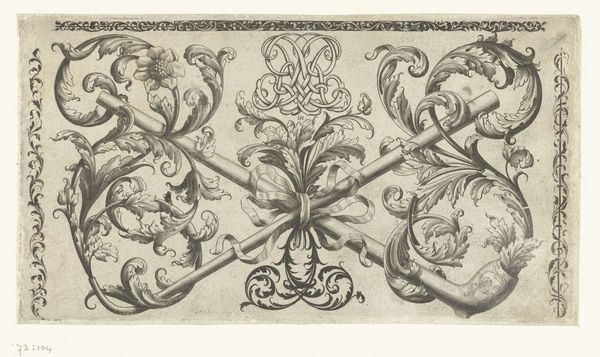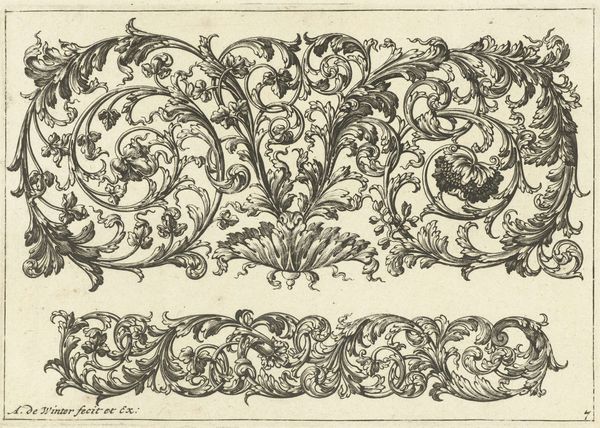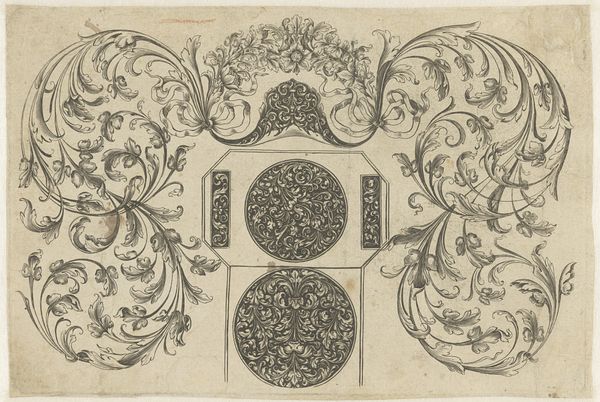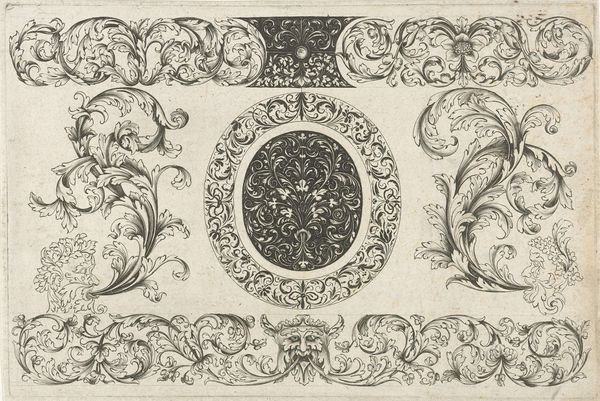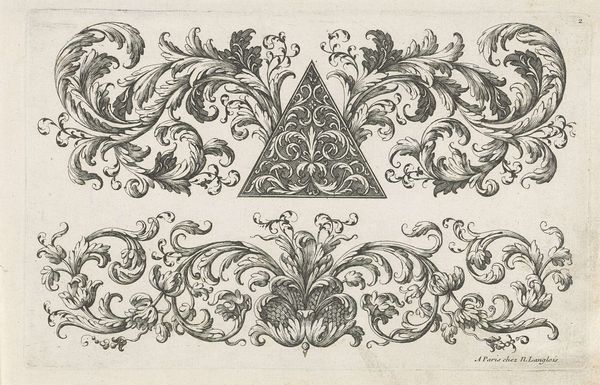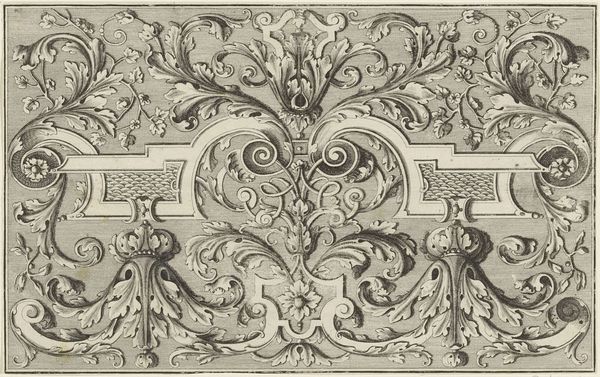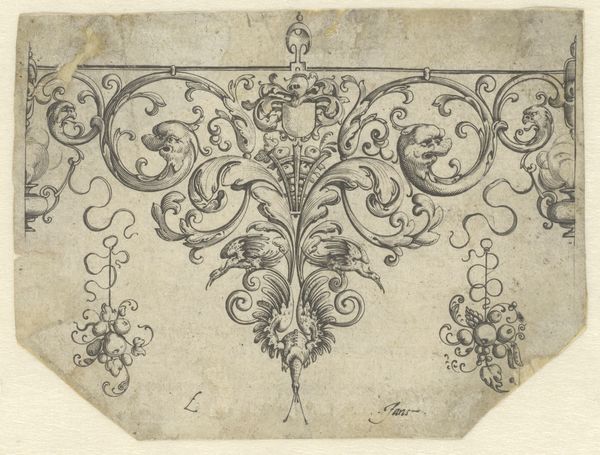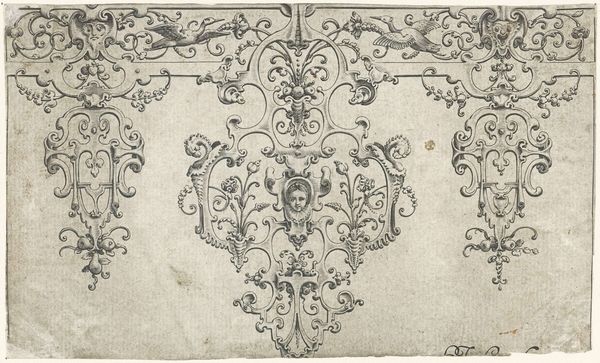
print, etching, engraving
#
baroque
# print
#
etching
#
old engraving style
#
form
#
ink line art
#
geometric
#
line
#
decorative-art
#
engraving
Dimensions: height 144 mm, width 214 mm
Copyright: Rijks Museum: Open Domain
Editor: So, here we have "Two Ovals among Leafy Branches", an engraving from around 1672 to 1676 by an anonymous artist. It's incredibly detailed, almost like a blueprint. What strikes you about this piece? Curator: What interests me immediately is its function as a print. It invites questions about its original purpose – was it a design template? An element in the book trade? Or perhaps a study in reproducible ornament? Editor: I hadn't thought about that! I was too focused on the ornate detail. So, by "function" you mean how it was produced and potentially used at the time? Curator: Exactly! The repetitive nature of printmaking lends itself to mass production and wider distribution. We can see this work as both art and a commodity, reflecting Baroque sensibilities about craftsmanship, value and labour. It compels us to examine the production itself, the labour of the engraver, and the audience it sought to reach. How might such a design have been integrated into larger consumer objects, influencing ideas around taste and value? Editor: That is a perspective shift for sure! Thinking of it as a manufactured item, it changes everything. Was "art" like this common then, meant to be reproduced, I mean? Curator: Indeed! And that commonality raises important considerations around skill, authorship, and who had access to such imagery and the objects that featured these details. Editor: Okay, now I am seeing how process really shifts the context here. From art to a pattern of utility! Thanks for sharing. Curator: It challenges the boundaries we impose between craft and high art. The material tells a very human story about making and consumption.
Comments
No comments
Be the first to comment and join the conversation on the ultimate creative platform.
